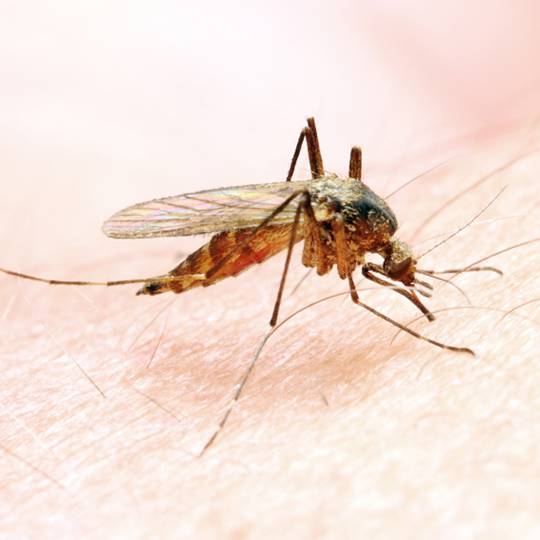
Common species in the United States: Anopheles quadrimaculatus, Culex pipiens, and Aedes aegypti (Asian tiger mosquito)
What Are Mosquitoes?
Mosquitoes are notorious pests that often show up to bother you at a backyard barbecue, annoy you while you are doing yard work, or buzz around while you are trying to relax on the porch or patio. Although they are disliked immensely for the itchy bites they leave behind, mosquitoes have become a serious health concern because they can carry deadly diseases like West Nile virus, malaria, yellow fever, and Saint Louis encephalitis. But don’t give up on the great outdoors just yet–there are some ways to fight back against these party poopers.
Named after the Spanish word for “little fly,” mosquitoes (Culicidae) are long-legged insects with elongated bodies and a pair of scaled wings. Over 3,500 species of mosquitoes exist all over the world, but only the females are responsible for those annoying bites. In order to nourish her eggs, she feeds on the blood of various hosts by using a needle-like mouth called a proboscis to pierce the skin. It is these bites that leave behind the itchy, raised bumps we all detest.
The four stages of a mosquito’s life are egg, larvae, pupae, and adult. They spend the first three stages of their life in water. Once they become an adult, they are free to fly away. Female mosquitoes of some species can lay up to 300 eggs at a time.
Mosquito Signs and Symptoms
Mostly active at dawn or dusk, mosquitoes prefer cloudy weather and shady areas and dislike full sun. They are attracted to the carbon dioxide we exhale, but they also home in on humans through scent, sight, and heat.
Besides buzzing in your ear, the most noticeable sign of these pesky bugs is the red, raised bump their bites leave behind. Reactions to bites differ from person to person, varying from a slight itch or irritation to inflammation and swelling of the skin.
The females lay eggs on stagnant or standing water, so infestations can sometimes begin in empty plant containers or clogged gutters where water sits still for long periods of time. Floating on the surface of the water, the tiny white clumps of eggs eventually darken to black and hatch in about one to three days.
Mosquito Prevention
There are ways to take back your yard so you can enjoy outdoor activities again. First and foremost, always use a bug repellent before venturing outside. Repellents containing 30% to 50% of DEET can offer several hours of protection, while repellents with lower amounts offer shorter periods of protection and need to be re-applied often.
Steps you can take to reduce mosquito activity:
- Remove all standing water in your yard. Small pools of water, birdbaths, and even old tires can become breeding grounds for mosquitoes.
- Turn over wheelbarrows, buckets, empty plant pots, or plastic wading pools when not in use.
- Get your gutters cleaned out every year.
- Keep water flowing in fish ponds or fountains. Mosquitoes can’t lay eggs on moving water.
- Maintain your lawn. Keep the grass mowed, eliminate weeds, and tend to overgrown foliage.
- Drill drainage holes in your outdoor garbage cans and recycling bins.
- Light citronella candles when you are enjoying time on your patio or porch. Citronella oil repels mosquitoes and essential oils like eucalyptus or lavender may help as well.
- Use a small bowl of water with dish soap in it to attract mosquitoes. Once they land on the water, they get stuck in the detergent and drown.
To control your lawn’s mosquito population, contact Cardinal Lawns today. We provide thorough pest control and unparalleled expertise to help your property look its best.
Need Help with Mosquitoes?
Call Cardinal Lawns today at 614-808-4446 and let's talk about how we can help treat for Mosquitoes and other common Ohio lawn pests.
Get a Free Quote